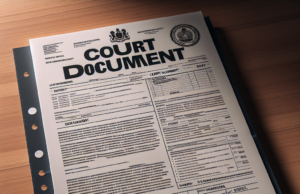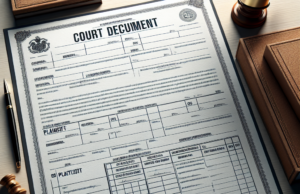Know The Different Types of Custody

Divorce is never an easy process, and from the divorce stems several other issues with which both parents need to address. There are the often bitter feelings, assignment of fault, and then the splitting of the assets. Yet, at the center of every divorce lies the most important asset, which is your child. Child custody cases can often be the most difficult part of the divorce process. Many times, neither parent wants to be the parent who will have to sacrifice their role in their child’s life.
Sole Legal Custody
The first type of custody is sole legal custody. As the name implies, a parent granted sole legal custody is the only parent with the legal authority to make any decisions on behalf of the child regarding anything that will affect the child’s life. These decisions can range from minor decisions as to the child’s bedtime, to bigger decisions such as the child’s religious upbringing, the child’s education, all healthcare related issues and travel. Although courts prefer to grant joint legal custody of the child to the parents, as it is important for both parents to play a role in the child’s life, there are definite advantages to having sole legal custody of a child.
This is especially true if the divorce is particularly contentious, or if the judge decides that one of the parents are unfit to make such decisions on behalf of their child. Having sole legal custody of the child constitutes that the parenting plan would exclude most of the major issues on which parents may potentially disagree. Since one parent would be making all the decisions affecting the child’s life, this may spare the child from having to witness an argument between the parents. Divorce is often difficult for the child and if the child can sense that both parents, whom they love, cannot come to a decision based on issues affecting the child’s daily life, it could create more stress for the child. One parent having sole legal custody of the child can alleviate most of these problems. Having one parent making all the decisions may create a sense of consistency for the child, thus allowing them a sense of stability.
The other type of legal custody is joint legal custody. Joint legal custody means that the major decisions about the child’s life will continue to be shared between both parents. These major decisions may include those about education, health and dental care, emergency care, religious practices, as well as the participation in extracurricular activities. Joint legal custody can be decided independently by each parent or by both parents through a parenting plan. Once this decision has been made, the court system must approve it in order to enforce it legally.
During the process, the judge will evaluate the decision based on the child’s best interest. If the judge decides that it is in the child’s best interest to have both parents share the parental duty of making the decisions regarding the life of the child, then the judge will grant joint legal custody to both parents. In the past, courts have generally granted sole legal custody of the child to the mother, as she was usually the primary caregiver. However, due both to advances in civil rights, as well as the modernization of societal and gender roles, granting of custody is commensurate on practical means, rather than antiquity. Parents who choose to continue the shared responsibility of making decisions for the child may choose to develop a parenting plan in order to split the decision making responsibilities between them.
Decisions about the terms of a parenting plan pertaining to joint legal custody can be handled in a few ways. Most often they are handled during mediations or arbitration. Arbitration involves a third party, usually an alternative dispute resolution practitioner, whose purpose is to facilitate joint legal custody negotiations.
During arbitration, it is may be advantageous to a parent to retain the services of a divorce attorney who can ensure that their interests are protected and maximized. Through arbitration, a parenting plan is developed which details the stipulations, and addresses other issues pertaining to joint legal custody. The specifics of joint legal custody can be revised, as needed, after the original terms have been established. The terms of a joint legal custody decision are legally binding, and any violation of these terms is legally punishable. If one or both parents refuse to follow the
Sole Physical Custody
An additional methodology in the awarding of custody, in lieu of basic legal custody, is physical custody. Sole physical custody entails one parent being granted physical custody rights making them the non-custodialvisitation rights
The other type of physical custody is joint physical custody. Joint physical custody constitutes that both parents will have custody of the child. Both parents are custodial parents in this case, and there is no longer a non-custodial parent. Joint physical custody usually means that each parent will spend an almost equal and significant amount of time with their child.
In cases where one parent spends slightly more time with the child, this parent is said to have primary physical custody of the child. Joint physical custody ensures that each parent will have constant and frequent contact with their child. A primary ideal of joint physical company is that the term “visitation” is no longer used. Instead, a court-ordered custody schedule, or a parenting plan, is implemented by the judge. Again, there are a few ways in which a parenting plan may be developed. Parents who decide to pursue joint physical custody of their child can both develop a parenting plan together, or if the parents have difficulty agreeing on any aspect of the parenting plan, they may choose to enlist the help of an arbitrator.
As mentioned above, the arbitrator is a third party that will listen to each parent, and develop a parenting plan based on the best interest of the child. The parenting plan will then be legally binding and violating the agreement may be legally punishable. Although joint physical custody has many benefits for the child and parents, it also has its disadvantages. Joint physical custody requires that each parent spend equal amounts of time with the child. This often means that the child must move between the parent’s homes at least twice a year. This may be problematic for the child, especially if the parents live far apart from one another. For the child, this means leaving a comfortable and familiar setting and starting over again in an unfamiliar environment.















